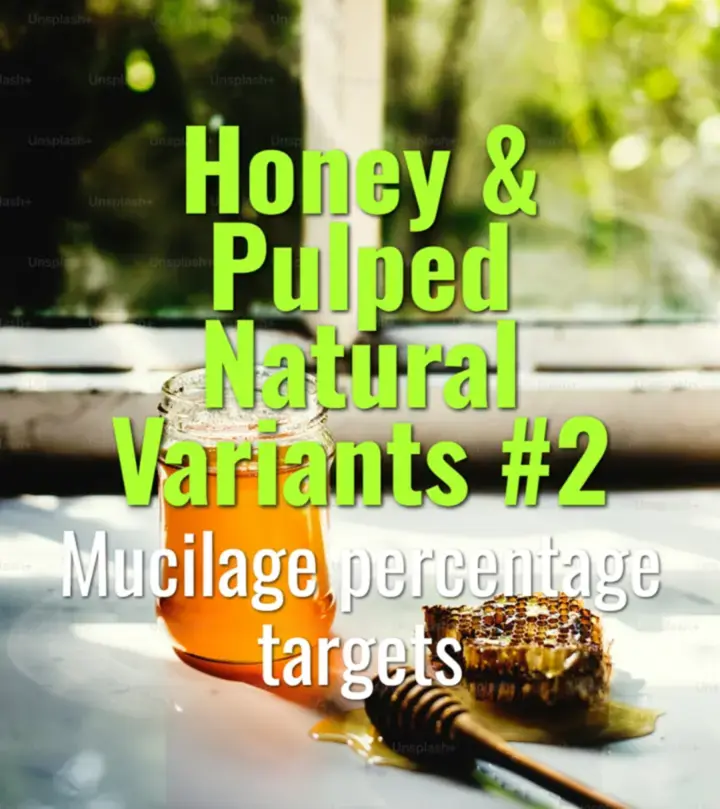Mucilage percentage targets
This topic explains how mucilage percentage targets define honey and pulped natural processes, the methods used to control them, and how different levels affect flavor and risk during drying.
- Coffee Basics Nerds
- 2 min read
Article 2 of 12 in Honey & Pulped Natural Variants/

Role of Mucilage in Processing
- Mucilage is a sticky, sugar-rich layer around parchment coffee.
- In honey processing, the amount left on beans after pulping determines sweetness, body, and drying speed.
- Mucilage percentage targets guide producers in creating white, yellow, red, or black honey profiles.
Mucilage Percentage Targets
- White honey: ~10–20% mucilage retained.
- Yellow honey: ~25–50% mucilage retained.
- Red honey: ~50–75% mucilage retained.
- Black honey: ~75–100% mucilage retained.
How Targets Are Managed
- Pulping equipment settings: Adjustable pulpers allow partial mucilage removal.
- Washing step: Skipped or minimized to retain desired mucilage.
- Drying method:
- White/yellow → faster drying with frequent turning.
- Red/black → slower drying, often under shade or controlled airflow.
Impact on Flavor Profiles
- Low mucilage (white/yellow): Clean, bright acidity, lighter body.
- Medium mucilage (yellow/red): Balanced sweetness, more fruit-forward notes.
- High mucilage (red/black): Intense fruitiness, syrupy or winey body, greater complexity.
Risks by Percentage
- Lower mucilage: Easier to manage, lower defect risk.
- Higher mucilage: More prone to mold, uneven drying, or over-fermentation.
Monitoring & Consistency
- Producers visually assess mucilage levels and adjust pulper calibration.
- Documentation ensures repeatability across lots.
- Cupping feedback confirms if mucilage target achieved the intended profile.
Lasting Importance
Mucilage percentage targets allow farmers to fine-tune honey processing, offering a spectrum of flavors from clean to complex. By controlling mucilage retention, they balance market appeal, risk, and resource use while differentiating their coffee in specialty markets.
You might also like:
- Tags:
- Lasting Importance
- Specialty Markets
- Uneven Drying
- Fine Tune
- Sweetness Body
- Flavor Profiles
- Lighter Body
- Red Black
- Bright Acidity
- Black Honey
- Fruit Forward
- Cupping Feedback
- White Yellow
- Honey Processing
- Clean Bright
- Frequent Turning
- Balanced Sweetness
- Red Honey
- Yellow Honey
- Parchment Coffee
- Impact Flavor
- Yellow Red
- Faster Drying
- Sweetness Fruit
- Mucilage Retention
- White Honey